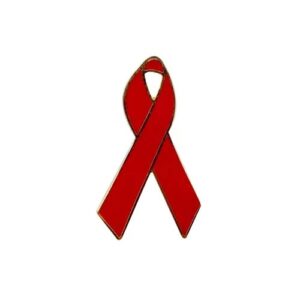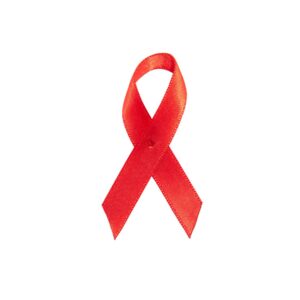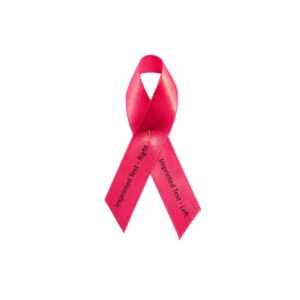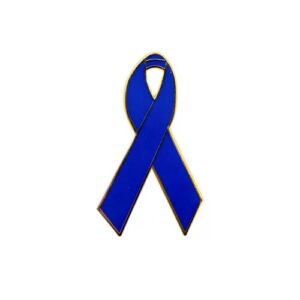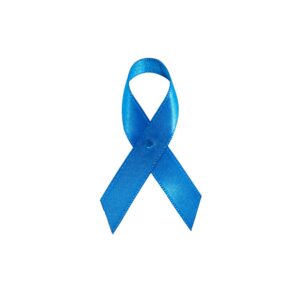Search by Color or Cause
According to the Global RA Network, as of 2021, more than 350 million people globally have arthritis. As a result, arthritis awareness ribbons are one of the most popular items on our website. The ribbons, pins and wristbands, further recognize arthritis as the nation’s primary cause of disability.
To begin, arthritis affects nearly 60 million adults and 300,000 children. For example, over one hundred types of arthritis and related conditions damage the joints and often other organs. Therefore, an arthritis diagnosis can be complicated. For this reason, learning about the disease, setting up a treatment plan, starting on new medications and possibly making lifestyle changes are important. In addition, The Arthritis Foundation resources may be helpful to learn more about a particular form of arthritis.
As well as taking these important steps, sharing your diagnosis with others is important. However, explaining a complicated diagnosis such as arthritis can be challenging. For example, it is difficult to explain conditions such as juvenile arthritis or RA. Wearing a blue awareness ribbon or purple and blue awareness ribbon to represent these causes, therefore, may be an easier way to start a conversation. It's important to have conversations about arthritis, its symptoms, and treatment options.
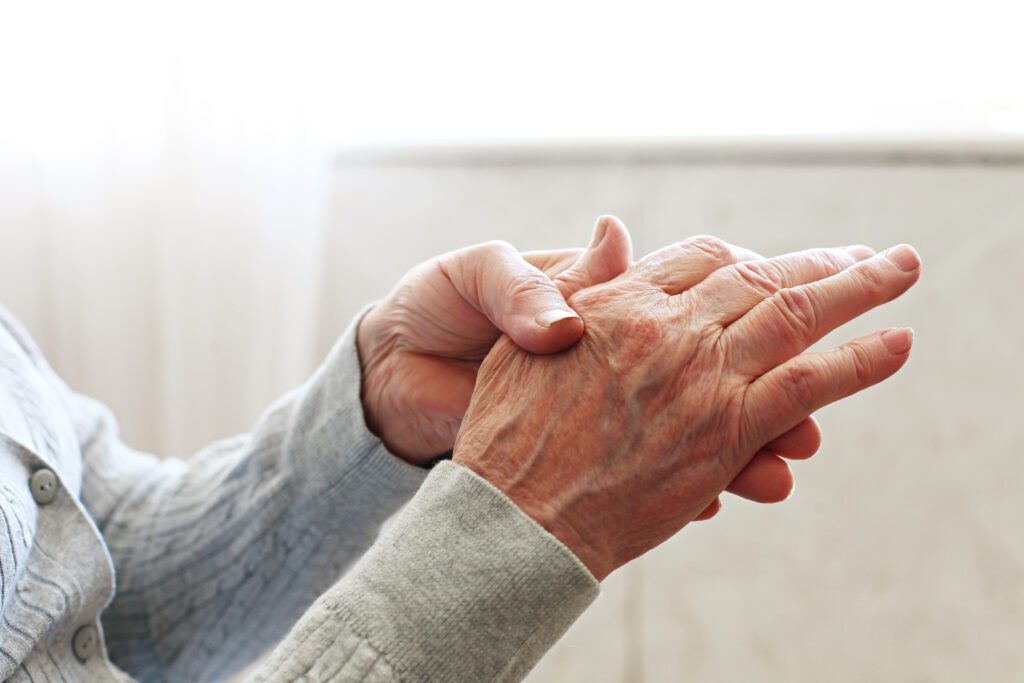
Red Awareness Ribbons for Adult-Onset Still's Disease Awareness
Adult Onset Still’s disease is a rare type of inflammatory arthritis. It is similar to rheumatoid arthritis. In addition, it shares characteristics of systemic-onset juvenile idiopathic arthritis. It begins, however, in adulthood. Inflammation typically affects a few joints at first. However, it may advance to include more joints over time.
Ribbons Blue Awareness Ribbons for Ankylosing Spondylitis Awareness
Ankylosing Spondylitis is an inflammatory arthritis. It causes pain in the joints and ligaments. The most common symptoms of ankylosing spondylitis are chronic pain and stiffness in the lower back, buttocks and hips. It typically develops slowly over several weeks or months.
Blue Awareness Ribbons for Back Pain Awareness
The back is a common target of several types of arthritis. It can, therefore, cause a great deal of pain. Most back pain is due to strain, injury or posture problems affecting the ligaments or muscles of the spine. However, it may be due to arthritis, scoliosis, inflamed nerves or a problem in a different part of the body.
Light Blue Awareness Ribbons for Behçet's Disease Awareness
Behçet's disease, also called Behçet's syndrome, is a rare disorder. It causes seemingly unrelated symptoms to occur in different parts of the body, including mouth sores, genital sores, eye inflammation, and skin rashes and lesions. Behçet's is thought to be an autoimmune disorder. For unknown reasons, in autoimmune disorders the immune system turns against the body it's designed to protect. In Behcet’s disease, blood vessels are the site of the attack on the body.
Blue Awareness Ribbons for Bursitis Awareness
Bursitis is inflammation of a bursa. A bursa is a small fluid-filled sac that acts as a cushion between a bone and muscle, skin or tendon. The type of bursitis depends on the location of the affected bursa. Bursitis commonly affects the shoulder, elbow, hip, buttocks, knees and calf.
Blue Awareness Ribbons for Calcium Pyrophosphate Deposition Disease Awareness
Calcium pyrophosphate dihydrate crystal deposition disease occurs when crystals form deposits in the joint and surrounding tissues. The crystal deposits provoke inflammation in the joint. This can cause the joint cartilage to break down. The disease may take a few different arthritis-related forms. These include osteoarthritis, a chronic rheumatoid arthritis-like inflammatory arthritis, or an acutely painful inflammatory condition called pseudogout.
Blue Awareness Ribbons for Carpal Tunnel Syndrome Awareness
Carpal tunnel syndrome affects the arms, wrists and hands. It occurs when the nerve that goes from the forearm to the palm of the hand (carpal tunnel) is squeezed or pinched at the wrist. The wrist and hand may become painful, weak or numb, and these sensations may travel up the arm. Women are three times more likely than men to have carpal tunnel syndrome.
Blue Awareness Ribbons for Chondromalacia Patella Awareness
Chondromalacia patella causes pain and tenderness in the front or side of the knee. It also causes a grinding sensation in the knee. This condition is additionally known as patellofemoral pain syndrome or more commonly as “runner’s knee.” It occurs more in adolescents and young adults, women and athletes who engage in sports. This condition puts a lot of stress on the knee.
Blue Awareness Ribbons for Chronic Fatigue Syndrome Awareness
Chronic fatigue syndrome (CFS) is a state of profound fatigue. It lasts six months or longer. In addition, it is not improved by bed rest. In fact, it may get worse with physical or mental activity. The fatigue of this condition significantly interferes with daily activities and work.
Orange Awareness Ribbons for Complex Regional Pain Syndrome Awareness
Complex regional pain syndrome (CRPS), also called reflex sympathetic dystrophy syndrome (RSDS), involves a disturbance in the sympathetic nervous system. The sympathetic nervous system is the network of nerves located alongside the spinal cord. This controls certain bodily functions, such as opening and closing blood vessels or sweat glands. CRPS causes musculoskeletal pain and skin changes, primarily in the hands and feet.
Blue Awareness Ribbons or Orange Awareness Ribbons Cryopyrin-Associated Periodic Syndromes Awareness
Cryopyrin-associated periodic syndromes is also called cryopyrin-associated autoinflammatory syndrome. There are three diseases related to a defect in the same gene: neonatal onset multisystem inflammatory disease, Muckle-Wells syndrome, and familial cold autoinflammatory syndrome. The differences in these diseases are in their severity and the organs involved.
Cream Awareness Ribbons for Degenerative Disc Disease Awareness
In a young and healthy back, discs between the vertebra provide height and allow bending, flexion, and twisting. As a normal process of aging, the rubbery discs shrink and lose integrity. For those people in whom the degenerated discs cause pain that cannot be attributed to another problem, degenerative disc disease is considered to be the cause.
Cream Awareness Ribbons for Developmental-Dysplasia of the Hip Awareness
Developmental dysplasia of the hip is a dislocation of the hip joint in a newborn baby. The hip is made of two parts: a rounded head or “ball” and cup-like “socket.” In some babies, the socket is too shallow and the ball slips out of place in part or completely. This may happen in one or both hips.
Zebra Awareness Ribbons for Ehlers-Danlos Syndrome Awareness
Ehlers-Danlos syndrome is a collection of genetic disorders that affect connective tissue. People who have EDS have problems with their collagen. Collagen is a protein that adds strength and elasticity to connective tissue. This faulty collagen affects many body parts, for example, skin, muscles and ligaments.
Blue Awareness Ribbons for Familial Mediterranean Fever Awareness
Familial Mediterranean fever is a hereditary illness. It is characterized by repeated attacks of painful inflammation in the abdomen, chest or joints. It addition, it is often accompanied by fever, rash, or headache. Sometimes inflammation may also occur in other parts of the body. These include the heart, membrane surrounding the brain and spinal cord, and the testicles. Familial Mediterranean fever primarily affects populations originating in the Mediterranean region, particularly people of Armenian, Arab, Turkish or Jewish ancestry. The disorder affects 1 in 200 to 1,000 people in these populations. It is, however, less common in other populations.
Purple Awareness Ribbons for Fibromyalgia Awareness
Fibromyalgia is a condition associated with widespread chronic pain, fatigue, memory problems and mood changes. Fibromyalgia is not a single disease. Instead, it is a constellation of symptoms that can be managed. It is not life threatening and does not lead to muscle or joint damage.
Blue Awareness Ribbons for Fifth Disease Awareness
Fifth disease, also called Erythema infectiosum, is a mild viral illness that most commonly affects children. It is called fifth disease because it is the fifth of the five viral rash diseases of childhood. The other four are measles, rubella, chicken pox and roseola. A child with Fifth disease may have mild cold or flu-like symptoms. It is then typically followed a few days later by a red rash on the cheeks, torso and limbs. Some children with Fifth disease may develop joint pain and swelling. Symptoms, however, don’t last for long.
Red Awareness Ribbons for Giant Cell Arteritis Awareness
Giant cell arteritis, or temporal arteritis, is an inflammatory disease. It affects the large blood vessels of the scalp, neck and arms. Inflammation causes a narrowing or blockage of the blood vessels. This, in turn, interrupts blood flow. The disease is commonly associated with polymyalgia rheumatica.
Blue Awareness Ribbons for Gout Awareness
Gout is a form of inflammatory arthritis. It develops in some people who have high levels of uric acid in the blood. For example, it occurs in about four percent of American adults. It is, however, more likely to affect men than women.
Burgundy Awareness Ribbons for Hemochromatosis Awareness
Hemochromatosis is sometimes called iron overload disease. This disease causes the body to absorb too much iron from foods. Iron is import because it is part of hemoglobin. Hemoglobin is a molecule in the blood that carries oxygen from the lungs to all tissues of the body. Too much iron, however, can build up in the organs. This is especially true of the liver, heart and pancreas. Without treatment, this buildup can lead to life-threatening organ damage.
Blue Awareness Ribbons for Infectious Arthritis Awareness
Infectious arthritis is a form of arthritis. It is caused by an infection in the joint. It is also called septic arthritis.
Purple and Blue Awareness Ribbons for Inflammatory Arthritis
Inflammatory arthritis is a group of diseases characterized by inflammation of the joints and often other tissues. Among others, these include rheumatoid arthritis, psoriatic arthritis, ankylosing spondylitis, juvenile idiopathic arthritis and systemic lupus erythematosus (lupus).
Purple Awareness Ribbons for Inflammatory Bowel Disease Awareness
Inflammatory bowel diseases include Crohn’s disease and ulcerative colitis. Inflammatory bowel diseases involve a chronic inflammation of some part of the digestive tract. Sometimes, IBD is associated with inflammatory arthritis. In Crohn's Disease, for example, inflammation is in the lining of the digestive tract. It affects different areas ranging from the small intestine to the large intestine or both. Ulcerative colitis causes ongoing inflammation. In addition, it causes sores in the inner lining of the large intestine (colon) and rectum.
Blue Awareness Ribbons for Juvenile Arthritis
Juvenile arthritis is not a disease in itself. Also known as pediatric rheumatic disease, JA is an umbrella term. This umbrella term is used to describe the many autoimmune and inflammatory conditions or pediatric rheumatic diseases that can develop in children under the age of 16. Juvenile arthritis affects nearly 300,000 children in the United States.
Blue Awareness Ribbons for Juvenile Dermatomyositis Awareness
Juvenile dermatomyositis is an inflammatory disease that causes muscle weakness and a skin rash on the eyelids and knuckles. JD affects an estimated 3,000-5,000 children in the United States. All ages and ethnic groups are affected. For example, most cases occur in children ages 5-10. Roughly 1 in 5 children also has joint symptoms. Joint symptoms, however, are likely to be mild. Remission is possible, but a minority of children with JDM may have a more chronic disease course.
Blue Awareness Ribbons for Juvenile Idiopathic Arthritis Awareness
Nearly 300,000 children, ranging from infants to teenagers, have some form of arthritis. Juvenile idiopathic arthritis is the most common type of arthritis in children. The term idiopathic means “of unknown origin.” JIA was previously called juvenile rheumatoid arthritis, or JRA. JIA is not contagious.
Teal Awareness Ribbons for Juvenile Scleroderma Awareness
Scleroderma, which literally means “hard skin,” describes a group of conditions that causes the skin to tighten and harden. There are two basic forms. These include localized scleroderma and systemic sclerosis. Juvenile scleroderma can also occur at any age and in any race. It is, however, more common in girls. It is a rare disease.
Red Awareness Ribbons or Orange and Red Awareness Ribbons for Kawasaki Disease Awareness
Kawasaki disease is a rare childhood condition. This condition involves inflammation of the blood vessels, especially the coronary arteries. Kawasaki disease is a disease of infants and young children, usually aged 2 years and younger. Boys are afflicted more often than girls. Although all racial groups are affected, children of Asian ancestry are more likely to develop the disease.
Purple Awareness Ribbons for Lupus Awareness
Lupus is a chronic, autoimmune disease that affects various parts of the body. The parts of the body that are involved include joints, kidneys and other organs, skin, and blood. In addition, it may even affect the brain.
Purple Awareness Ribbons for Lupus in Children and Teens Awareness
Lupus is an autoimmune disease. In autoimmune diseases, the immune system turns against the body it's designed to protect. This occurs for unknown reasons. Lupus affects nearly every organ system in the body, including the skin, joints, kidneys, heart, lungs and central nervous system. Most often when people speak of childhood lupus, they are referring to systemic lupus erythematosus (SLE). Lupus is more common in young people than generally believed. The best estimate is that SLE affects between 5,000 and 10,000 children in the United States. Adolescent girls develop lupus much more frequently than boys. In children before puberty, girls are affected only a little more frequently than are boys.
Lime Green Awareness Ribbons for Lyme Disease Awareness
Lyme disease is an infection caused by bacterium carried by deer ticks. If caught early, however, it is easily treated with antibiotics. If left untreated, the infection can spread to the joints, heart, and nervous system. It is then a complex debilitating disorder that is more difficult to treat.
Purple and Blue Awareness Ribbons for Mixed Connective Tissue Disease Awareness
Mixed connective tissue disease is a rare autoimmune disorder featuring signs and symptoms of three different disorders: lupus, scleroderma and polymyositis. An autoimmune disorder is one in which the body’s immune system turns against the body. The immune system is designed to protect the body.
Blue Awareness Ribbons for Myositis, Polymyositis and Dermatomyositis Awareness
Myositis is a term meaning inflammation in the muscles. There are several types of myositis. The most common is polymyositis and dermatomyositis. Polymyositis causes muscle weakness around the middle of the body. It also affects both sides of the body. Dermatomyositis causes muscle weakness as well as a skin rash. Juvenile dermatomyositis differs from the adult form because of the coexistence of vasculitis. Vasculitis is inflammation of blood vessels.
Blue Awareness Ribbons for Osteoarthritis Awareness
Sometimes called degenerative joint disease or “wear and tear” arthritis, osteoarthritis is the most common chronic condition of the joints. It occurs when the cartilage or cushion between joints breaks down. This leads to pain, stiffness and swelling.
White Awareness Ribbons for Osteoporosis Awareness
Bones are living tissue made up of calcium and other minerals. With osteoporosis, the tissue breaks down faster than it is replaced. This makes bones become thinner and more likely to break with pressure or due to a fall.
Blue Awareness Ribbons for Pagets Disease of the Bone Awareness
Paget’s disease is a chronic disorder in which excessive breakdown and formation of bone causes the bones to become enlarged, misshapen and weakened. The disease usually does not affect the entire skeleton. It typically, however, affects just one or a few bones. If the pelvis is affected the disease can cause hip pain.
Blue Awareness Ribbons for Palindromic Rheumatism Awareness
Palindromic rheumatism is a rare episodic form of inflammatory arthritis. In this type of arthritis, there is joint pain and swelling that come and go. Between attacks, the symptoms disappear and the affected joints go back to normal. Therefore, there is no lasting damage. Half of the people with palindromic rheumatism eventually develop rheumatoid arthritis. Rheumatoid arthritis, however, does cause permanent joint damage. Palindromic rheumatism affects men and women equally. It usually affects people between the ages of 20 and 50.
Blue Awareness Ribbons for Patellofemoral Pain Syndrome Awareness
Chrondromalacia patella causes pain and tenderness in the front or side of the knee. In addition, it causes a grinding sensation in the knee. This condition is also known as patellofemoral pain syndrome or more commonly as “runner’s knee.” This condition is more common in adolescents and young adults, as well as women and athletes that engage in sports. Chrondomalacia patella puts a lot of stress on the knee.
Blue Awareness Ribbons or Purple and Blue Awareness Ribbons for Pediatric Rheumatic Diseases Awareness
Pediatric rheumatic diseases, also called juvenile arthritis, is an umbrella term. This umbrella term is used to describe the many autoimmune and inflammatory conditions that can develop in children ages 16 and younger. Pediatric rheumatic diseases affect nearly 300,000 children in the United States. Although they share many common telltale symptoms, like pain, joint swelling, redness and warmth, each is distinct. In addition, each has their own special concerns and symptoms.
Purple Awareness Ribbons for Pediatric SLE Awareness
Lupus is a chronic, autoimmune disease. It affects various parts of the body, including joints, kidneys and other organs, skin, and blood. SLE even affects the brain. Children and teens with SLE may have fatigue, pain or swelling in joints, skin rashes, fevers, hair loss, mouth sores or skin color changes due to the cold (Raynaud's phenomenon). Fatigue is one of the most prominent and life-affecting symptoms. Joint pain, another prominent symptom, commonly initiates the first doctor visit.
Purple and Blue Awareness Ribbons or Red Awareness Ribbons for Polymyalgia Rheumatica Awareness
Polymyalgia rheumatica is an inflammatory disorder. This disorder is typically seen in older adults. Syptoms include widespread aching, stiffness and flu-like symptoms. This condition is more common in women than men. In addition, Caucasians have this disorder more than any other race. The average age of onset is 70 years. It, too, is rarely seen in people younger than 50.
Blue Awareness Ribbons for Pseudogout Awareness
Pseudogout often resembles gout. Like gout, it is caused by the formation of crystals in the joints, thus the name pseudogout. But instead of being composed of uric acid, as true gout crystals are, crystals in pseudogout are composed of a salt called calcium pyrophosophate dihydrate. The condition is also called CPPD disease.
Orange and Lavender Awareness Ribbons for Psoriatic Arthritis Awareness
Some people might hear “psoriasis” and think of the skin disease that causes itchy, scaly rashes and crumbling nails. It's true, psoriasis is an autoimmune disease that primarily affects the skin. But about 30% of people with psoriasis also develop a form of inflammatory arthritis called psoriatic arthritis. Like psoriasis, psoriatic arthritis is an autoimmune disease. This means it occurs when the body’s immune system mistakenly attacks healthy tissue. In this case, the condition attacks the joints and skin.
Purple, Red and White Awareness Ribbons for Raynaud's Phenomenon Awareness
Raynaud’s phenomenon is a condition that affects blood flow to the arms and legs. It occurs when the blood vessels that feed the fingers and toes contract in reaction to cold or emotional stress. Diverting blood flow away from the hands and feet to keep the body’s core warm is a normal reaction to extreme cold. However, in Raynaud’s phenomenon, the body reduces blood flow to the fingers and toes after relatively minor cold temperature exposures. This includes, for example, holding a glass of ice water or being in an air-conditioned room. Fingers, toes, hands, feet, lips and the tongue are most commonly affected.
Blue Awareness Ribbons for Reactive Arthritis Awareness
Reactive arthritis is an inflammatory type of arthritis. This type of arthritis affects the joints. In addition, it may affect the eyes, skin and urinary tract (bladder, vagina, urethra).
Orange Awareness Ribbons for Reflex Sympathetic Dystrophy Awareness
Complex regional pain syndrome is also called reflex sympathetic dystrophy syndrome. This syndrome involves a disturbance in the sympathetic nervous system. The sympathetic nervous system is the network of nerves located alongside the spinal cord that controls certain bodily functions. These include, for example, opening and closing blood vessels or sweat glands. CRPS causes musculoskeletal pain and skin changes, primarily in the hands and feet.
Blue Awareness Ribbons for Reiter's Syndrome Awareness
Reactive arthritis (formerly Reiter's syndrome) is a type of arthritis. It occurs because of an infection. Arthritis is when joints become inflamed and painful. Reactive arthritis is not contagious. This arthritis was formerly known as Reiter’s syndrome. It affects men more often than women. Further, it develops most often between ages 20 and 50.
Red Awareness Ribbons for Rheumatic Fever Awareness
Rheumatic fever is an inflammation in the heart, joints, skin or central nervous system. It occurs following inadequately treated strep throat or scarlet fever. These diseases are caused by an infection with group A streptococcus bacteria. Proper treatment of strep prevents rheumatic fever.
Blue Awareness Ribbons or Purple and Blue Awareness Ribbons for Rheumatism Awareness
The term “rheumatism” was used historically to describe a number of rheumatic conditions. It is no longer used. Medical professionals stress the importance of obtaining a specific diagnosis in order to get proper treatment.
Purple and Blue Awareness Ribbons for Rheumatoid Arthritis Awareness
Rheumatoid arthritis is an autoimmune disease in which the body’s immune system, which normally protects its health by attacking foreign substances like bacteria and viruses, mistakenly attacks the joints.
Teal Awareness Ribbons for Scleroderma Awareness
Scleroderma, which means “hard skin,” affects about 300,000 Americans. It is not contagious, infectious or cancerous. Scleroderma refers to two conditions. These include localized scleroderma and systemic sclerosis.
Purple Awareness Ribbons for Sjögren’s (Shogren's) Disease Awareness
In an autoimmune disease, the immune system mistakenly attacks healthy tissue, leading to inflammation in the body. In Sjögren’s (Sjogren's) syndrome, the infection-fighting cells of the immune system attack the normal cells of glands that produce moisture in the eyes, mouth and other tissues. These are called exocrine glands. This action damages these glands, making them unable to produce moisture.
Blue Awareness Ribbons or Cream Awareness Ribbons for Spinal Stenosis Awareness
Spinal stenosis is narrowing of the spinal column due to arthritis that leads to a bony overgrowth of vertebrae and a thickening of ligaments. If a significant overgrowth occurs, the narrowing can press on the nerves in the spine. Because the affected nerves have many functions, the condition may cause diverse problems in the lower body. This includes, for example, back pain, pain or numbness in the legs and constipation or urinary incontinence.
Blue Awareness Ribbons for Spondyloarthritis Awareness
Spondyloarthritis is an umbrella term for inflammatory diseases that involve both the joints and the entheses (the sites where the ligaments and tendons attach to the bones). The most common of these diseases is ankylosing spondylitis.
Blue Awareness Ribbons for Systemic Juvenile Idiopathic Arthritis Awareness
Systemic Juvenile Idiopathic Arthritis causes inflammation in one or more joints and is often accompanied by a high spiking fever (103°F or higher) that lasts at least two weeks and a skin rash. Other possible signs include inflammation of the heart or lungs or their outer linings, anemia, or enlarged lymph nodes, liver or spleen. About ten percent of children with JIA have the systemic form.
Purple Awareness Ribbons for Systemic Lupus Erythematosus Awareness
Systemic Lupus Erythematosus is an autoimmune disease. In autoimmune diseases, the immune system turns against the body it's designed to protect. Lupus can affect nearly every organ system in the body, including the skin, joints, kidneys, heart, lungs and central nervous system. Most often when people speak of lupus, they are referring to systemic lupus erythematosus (SLE).
Purple Awareness Ribbons for Systemic Lupus Erythematosus in Children and Teens
Systemic Lupus Erythematosus is much more common in young people than is generally believed. The best estimate is that SLE affects between 5,000 and 10,000 children in the United States. Adolescent girls develop lupus much more frequently than boys. However, in younger children before puberty, girls are affected only a little more frequently than are boys.
Teal Awareness Ribbons for Systemic Sclerosis Awareness
Scleroderma, which means “hard skin,” affects about 300,000 Americans. It is not contagious, infectious or cancerous. Scleroderma refers to two conditions. These include localized scleroderma and systemic sclerosis.
Red Awareness Ribbons for Temporal Arteritis Awareness
Giant cell arteritis, or temporal arteritis, is an inflammatory disease affecting the large blood vessels of the scalp, neck and arms. Inflammation causes a narrowing or blockage of the blood vessels. This interrupts blood flow. The disease is commonly associated with polymyalgia rheumatica.
Blue Awareness Ribbons for Tendinitis Awareness
Tendinitis is inflammation of a tendon. A tendon is a thick cord that attaches muscle to bone. Tendons act as pulleys to help muscles move a joint. Tendinitis commonly affects the shoulders, biceps, hands, wrists, thumbs and calves.
Red Awareness Ribbons for Vasculitis Awareness
Vasculitis is an autoimmune disease in which the body mistakenly sees blood vessels as a foreign invader and attacks them. This causes inflammation and leads to a narrowing of the vessels. Vasculitis can occur by itself or can be a feature of a rheumatic disease, such as rheumatoid arthritis, SLE (lupus) or systemic sclerosis. In severe cases, patients develop organ damage or death. About 100,000 Americans per year are hospitalized because of vasculitis. Vasculitis can affect people of all ages, races and gender.
Red Awareness Ribbons for Wegener's Granulomatosis Awareness
Granulomatosis with polyangiitis, formerly known as Wegener's granulomatosis, is a rare form of vasculitis. In this disorder, small-sized blood vessels in the nose, sinuses, ears, lungs and kidneys become inflamed and damaged. Other areas may also be affected in some cases. In addition, it can produce a type of inflammatory tissue known as a granuloma that's found around the blood vessels. Granulomas can destroy normal tissue.



